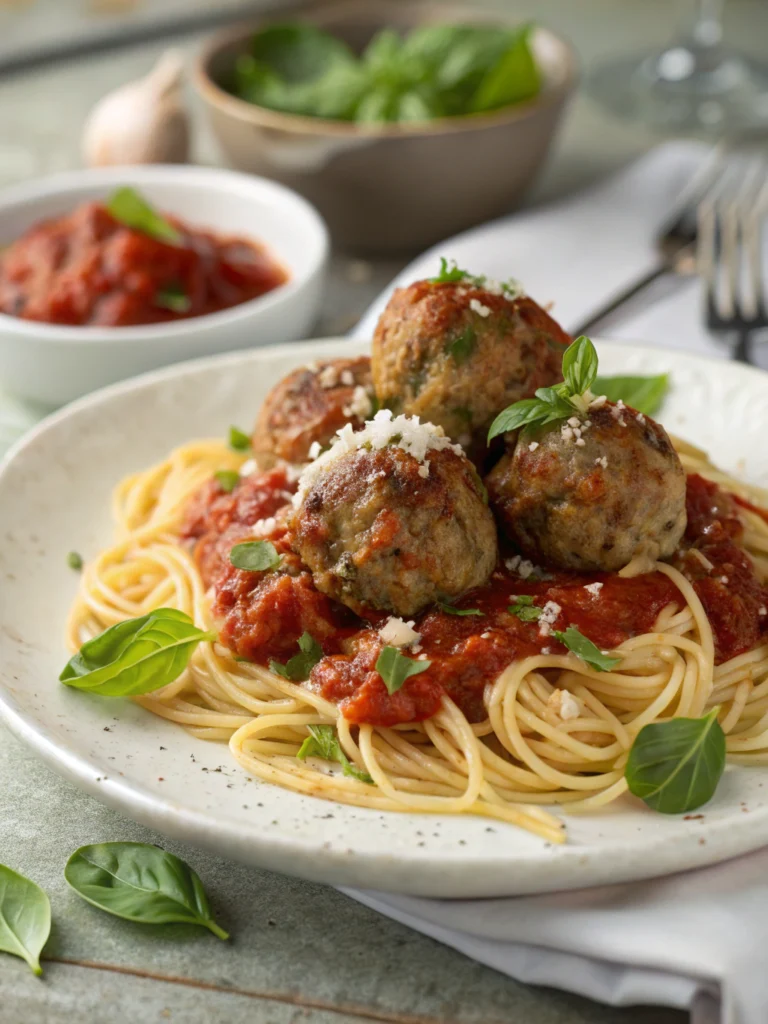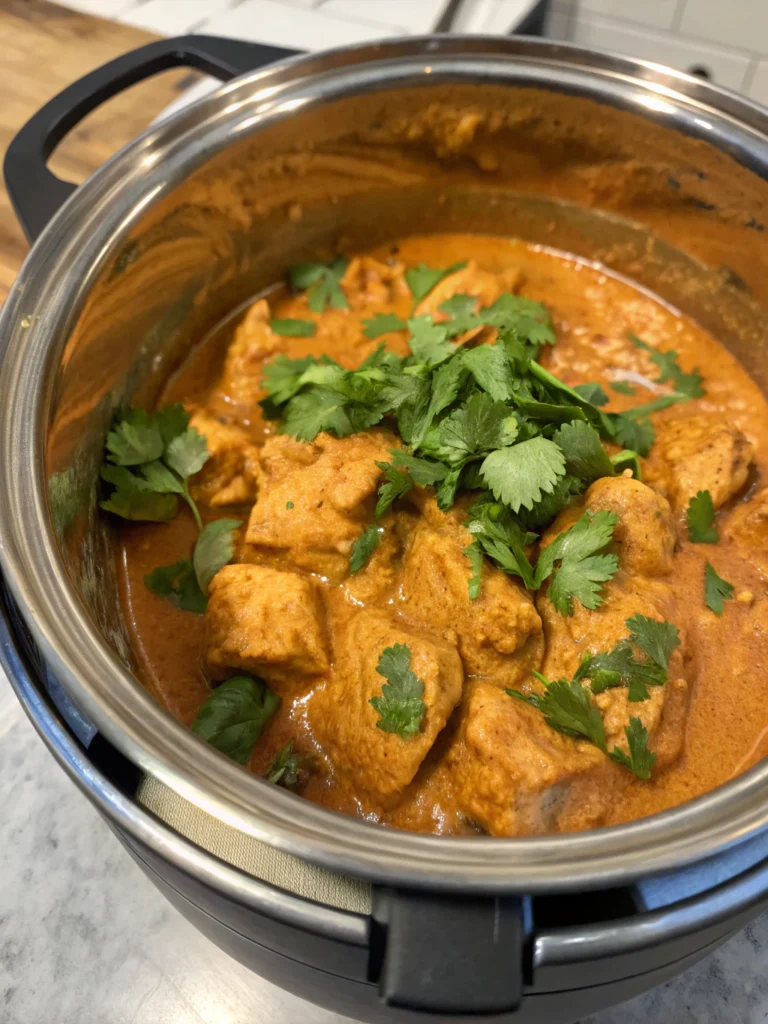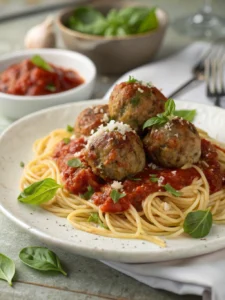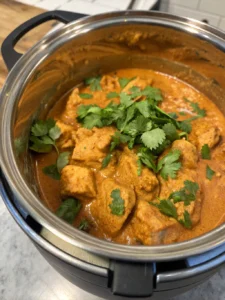Vegetarian Stir-Fry with Tofu – Quick, Colorful & Healthy Dinner
Ever wondered how to transform bland tofu into a mouthwatering meal that even dedicated meat-eaters would crave? The secret lies in mastering the art of stir-frying – a cooking technique that preserves nutrients while maximizing flavor in minutes rather than hours.
This vegetarian stir-fry with tofu recipe brings together crispy tofu, vibrant vegetables, and a savory sauce that will revolutionize your weeknight dinner routine. Perfect for busy professionals seeking nutritious options, this dish delivers protein, fiber, and essential vitamins in one colorful skillet.
Ingredients List

Gather these fresh, flavorful components for a stir-fry that balances texture, color, and nutrition:
- 1 block (14-16 oz) extra-firm tofu – drained and pressed (substitute tempeh for a nuttier flavor)
- 2 tablespoons cornstarch – for coating tofu (arrowroot powder works as an alternative)
- 3 tablespoons sesame oil – divided (peanut oil offers a different aromatic profile)
- 1 red bell pepper – sliced into thin strips
- 1 yellow bell pepper – sliced into thin strips
- 2 cups broccoli florets – cut into bite-sized pieces
- 1 medium carrot – julienned or thinly sliced
- 1 cup snow peas – ends trimmed
- 1 small onion – thinly sliced
- 3 cloves garlic – minced
- 1-inch piece ginger – grated
- 3 tablespoons low-sodium soy sauce (tamari for gluten-free option)
- 1 tablespoon rice vinegar
- 2 teaspoons maple syrup or honey (for non-vegan version)
- 1 teaspoon sriracha or chili paste (adjust to taste)
- 2 green onions – sliced diagonally for garnish
- 1 tablespoon sesame seeds – for garnish
Timing
This vegetarian stir-fry with tofu comes together remarkably quickly:
Preparation time: 20 minutes (includes pressing tofu and chopping vegetables)
Cooking time: 15 minutes
Total time: 35 minutes – approximately 40% faster than traditional protein-centered meals that often require 60+ minutes to prepare and cook.
Step-by-Step Instructions
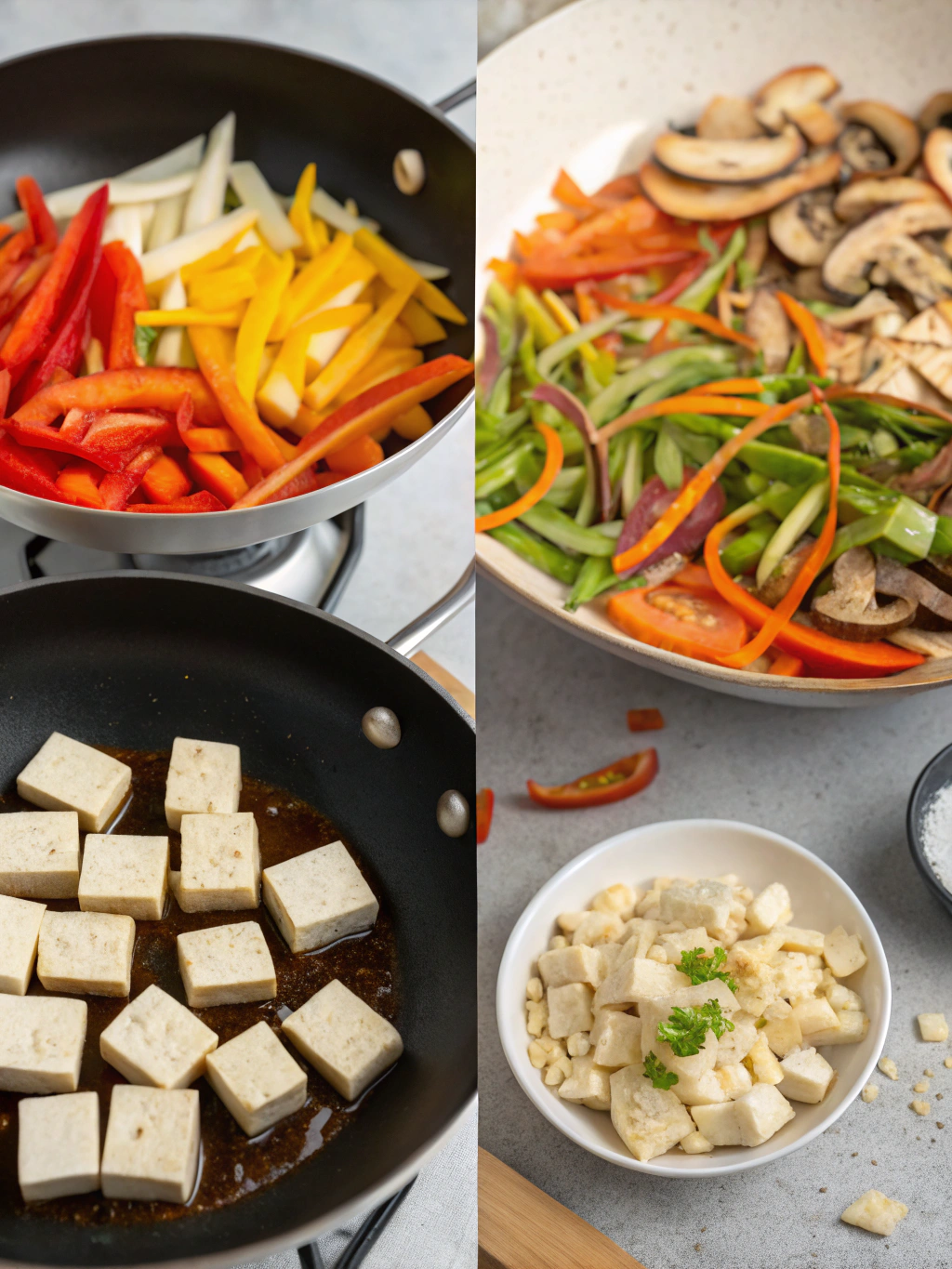
Step 1: Prepare the Tofu
Wrap your block of tofu in a clean kitchen towel or paper towels. Place a heavy object (like a cast-iron skillet) on top and let sit for 15 minutes to extract excess moisture. This crucial step ensures your tofu becomes crispy rather than soggy when cooked.
Step 2: Cube and Coat
Cut the pressed tofu into 1-inch cubes. Place in a bowl and sprinkle with cornstarch, tossing gently until all pieces are lightly coated. The cornstarch creates a crispy exterior that will hold up beautifully in the stir-fry sauce.
Step 3: Crisp the Tofu
Heat 2 tablespoons sesame oil in a large wok or skillet over medium-high heat. Add the tofu cubes in a single layer, being careful not to overcrowd. Cook for 2-3 minutes per side until golden brown and crispy. Remove to a plate lined with paper towels.
Step 4: Sauté Aromatics
In the same wok, add the remaining tablespoon of sesame oil. Add minced garlic and grated ginger, stirring constantly for 30 seconds until fragrant but not burned. These aromatics form the flavor foundation of your vegetarian stir-fry with tofu.
Step 5: Add Vegetables Strategically
Add onions first, cooking for 1 minute. Then add carrots and broccoli, stir-frying for 2 minutes. Finally, add bell peppers and snow peas. Cook everything for an additional 3-4 minutes until vegetables are crisp-tender. The sequential addition ensures each vegetable reaches perfect doneness.
Step 6: Create the Sauce
In a small bowl, whisk together soy sauce, rice vinegar, maple syrup, and sriracha. Pour over the vegetables and toss to coat evenly. The sauce should sizzle immediately upon contact with the hot pan.
Step 7: Reintroduce Tofu
Add the crispy tofu back to the wok, gently folding it into the vegetable mixture. Allow everything to simmer together for 1-2 minutes so the tofu can absorb some of the sauce while maintaining its texture.
Step 8: Garnish and Serve
Remove from heat and sprinkle with sliced green onions and sesame seeds. Serve immediately over steamed rice or noodles for a complete meal. The contrasting colors create an appetizing presentation that entices before the first bite.
Nutritional Information
This vegetarian stir-fry with tofu offers exceptional nutritional value per serving (recipe makes 4 servings):
Calories: 285 kcal
Protein: 14g (28% of daily recommended intake)
Carbohydrates: 19g
Dietary Fiber: 5g (20% of daily recommended intake)
Sugars: 8g (primarily from vegetables)
Fat: 18g (mostly heart-healthy unsaturated fats)
Sodium: 580mg (24% of daily recommended intake)
Vitamin A: 120% of daily value
Vitamin C: 210% of daily value
Calcium: 15% of daily value
Iron: 25% of daily value
This nutrient-dense meal provides approximately 40% fewer calories than comparable meat-based stir-fries while delivering higher levels of fiber and antioxidants.
Healthier Alternatives for the Recipe
Customize this healthy tofu recipe to suit various dietary needs:
Lower sodium: Reduce soy sauce to 2 tablespoons and use a sodium-free seasoning blend for additional flavor.
Lower fat: Use just 1 tablespoon of oil and “dry fry” the tofu in a non-stick pan before adding to the stir-fry.
Higher protein: Add 1/2 cup of edamame beans to boost protein content by approximately 8g per serving.
Grain-free: Serve over cauliflower rice instead of traditional rice for a lower-carb alternative that adds additional vegetables to your meal.
Oil-free version: Use vegetable broth or water for sautéing, and bake the tofu at 400°F for 25 minutes instead of pan-frying.
Serving Suggestions
Elevate your vegetarian stir-fry with these complementary pairings:
Classic base: Serve over jasmine rice, brown rice, or rice noodles for a traditional presentation.
Grain alternatives: Try quinoa for added protein or soba noodles for a nutty flavor profile.
Fresh additions: Top with fresh cilantro, Thai basil, or a squeeze of lime juice for brightness.
Texture contrast: Sprinkle with chopped peanuts or cashews for added crunch and protein.
Complete meal: Pair with a simple miso soup or vegetable spring rolls for an Asian-inspired feast.
Leftover transformation: Use cold leftovers to create a delicious lunch wrap with added avocado slices.
Common Mistakes to Avoid
- Skipping tofu pressing: This crucial step removes excess moisture, allowing the tofu to crisp up properly. Unpressed tofu remains soggy and bland.
- Overcrowding the pan: Too many ingredients at once create steam instead of sear. Cook in batches if necessary for optimal texture.
- Using low heat: Stir-frying requires high heat to quickly cook vegetables while maintaining their crispness and color. Studies show that quick cooking preserves up to 20% more nutrients.
- Cutting vegetables inconsistently: Uniform sizes ensure even cooking. Aim for similar dimensions for each vegetable type.
- Adding sauce too early: This causes vegetables to steam rather than stir-fry. Add sauce only after vegetables have developed some color.
- Stirring constantly: Allow ingredients to make contact with the hot pan for 30-60 seconds between stirs to develop proper caramelization.
Storing Tips for the Recipe
Maximize freshness and convenience with these storage strategies:
Refrigeration: Store leftovers in an airtight container for up to 3 days. The flavors often deepen overnight, making day-two stir-fry particularly delicious.
Freezing: While possible, freezing will alter the texture of the vegetables. If you must freeze, do so before adding sauce and expect softer vegetables upon reheating.
Reheating: For best results, reheat in a skillet over medium heat rather than microwave to maintain textural integrity. Add 1-2 tablespoons of water if the mixture seems dry.
Meal prep: Prepare all vegetables up to 2 days in advance and store in airtight containers. Press and cube tofu the day before, storing between paper towels to maintain dryness.
Sauce storage: Make extra sauce and refrigerate in a sealed jar for up to 2 weeks to expedite future stir-fries.
Conclusion
This vibrant vegetarian stir-fry with tofu transforms simple ingredients into an impressive meal that satisfies both nutritional needs and flavor cravings. With its perfect balance of protein, vegetables, and savory sauce, it proves that plant-based cooking can be both exciting and accessible.
Have you tried this colorful creation? Share your experience in the comments below! Did you customize any ingredients or discover a brilliant serving suggestion? Your insights could inspire our community of home cooks to explore new variations. And if you enjoyed this recipe, explore our collection of quick weeknight meals that bring global flavors to your table in 30 minutes or less!



